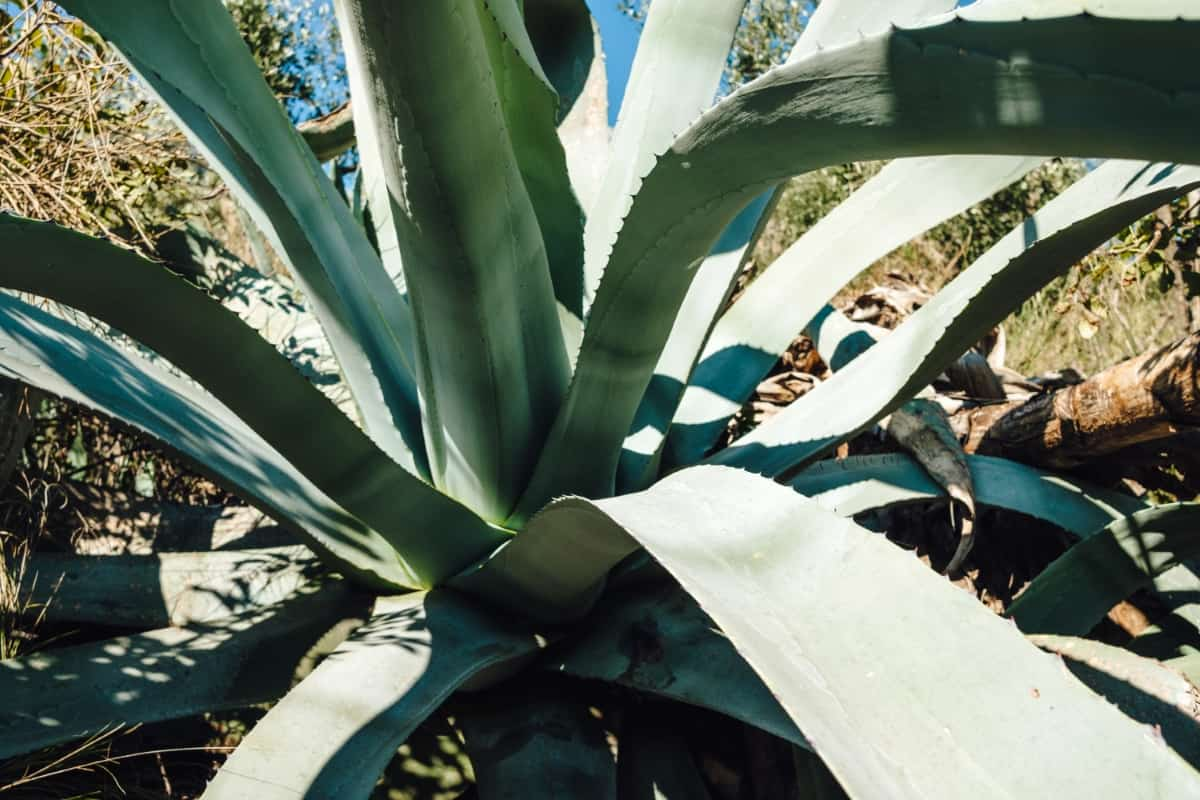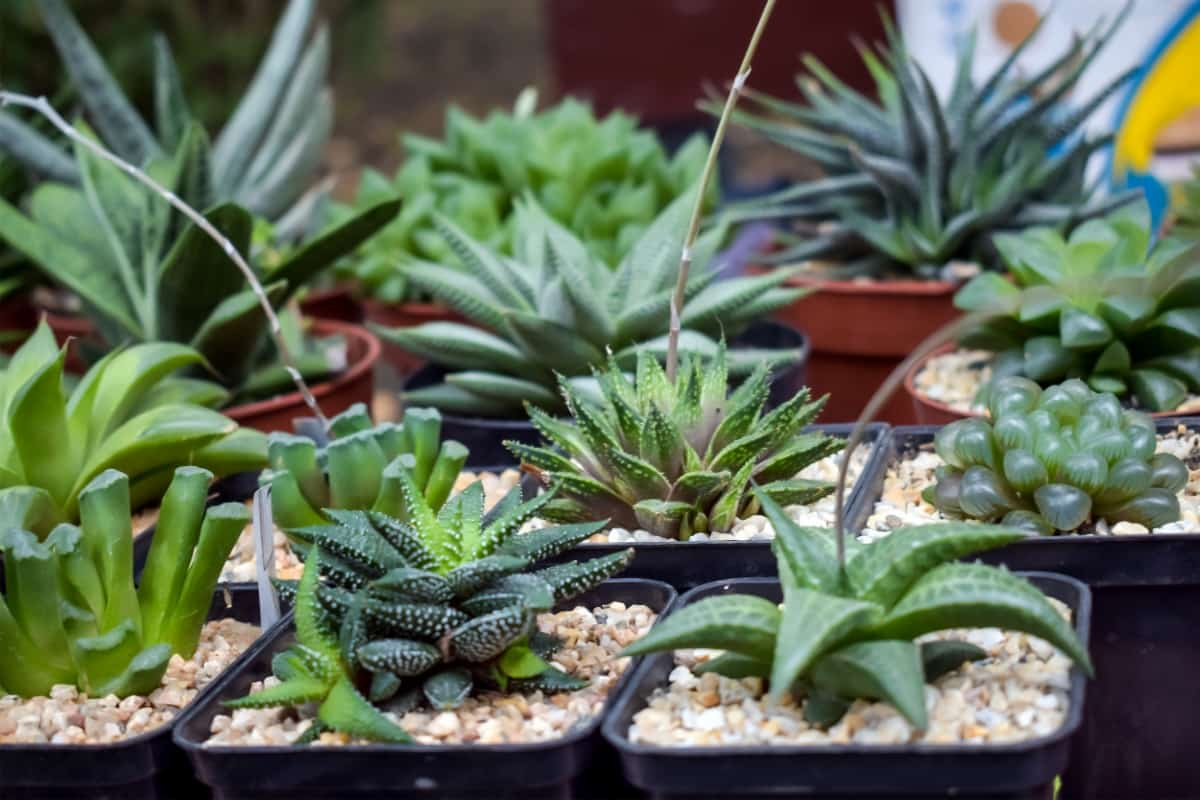One of the most striking features of succulent plants is the Agave, a hardy plant that adds a dramatic touch to any garden or indoor collection. The robust agave root system helps the plant survive in various conditions, making it a resilient choice for novice gardeners. This article will provide an easy guide on how to grow and care for Agave succulents indoors and outdoors, including instructions for planting them in the ground or pots, watering, sunlight requirements, and more.

How to Plant and Care for Agave Succulent
How to Grow Agave Succulent Indoors
Growing agave indoors is quite a simple process, but it requires attention and care. Select a pot with good drainage, as an agave’s root system doesn’t do well with excess water. The pot should also be wide enough to support the plant’s growth. The key is to emulate the plant’s natural desert habitat.
Place your potted agave where it can get plenty of light, as these plants thrive in bright conditions. If you’re wondering how long agave takes to grow, it’s a slow-growing plant and can take several years to reach its full size. But don’t let that discourage you; seeing an agave grow and flourish indoors is incredibly satisfying!
Care Tips for Agave Succulent in Pots
Caring for agave succulents in pots is no more challenging than their outdoor counterparts. It mainly involves providing the right kind of environment. To mimic their natural desert surroundings, ensure your plant gets plenty of sunlight, heat, and good air circulation. Remember to avoid overwatering, as this can lead to root rot. To ensure proper care for your agave plant, it is recommended to water it sparingly, allowing the upper layer of soil to dry before each watering. If you’re growing agave in pots, using pots with good drainage is essential to avoid water accumulation.
Watering Schedule for Agave Succulent
Watering an agave is a delicate balance. Too little water and the plant can shrivel, but too much water and the agave root system can rot. Agaves prefer a ‘soak and dry’ method where they are thoroughly watered and then allowed to dry out before the next watering. In summer, watering once a week should suffice, while in the cooler months, watering can be reduced to once a month or even less if your indoor air is particularly humid. Remember, it’s better to under-water than over-water an agave when in doubt.
Best Soil Mix for Agave Succulent
The kind of soil used for an agave succulent significantly influences its health. Agave plants prefer a well-draining soil mix that’s gritty and rough. A mixture of cactus soil and perlite or pumice at a 1:1 ratio usually works well. You could also add coarse sand or fine gravel to enhance the drainage. This soil type mimics the agave’s natural habitat and ensures water doesn’t stagnate around the plant’s roots.
Sunlight Requirements for Agave Succulent
Agaves love the sun. Most species need at least six hours of direct sunlight per day. If you’re growing your agave indoors, place it near a window with plenty of light. If the plant starts to look pale or the leaves stretch out, it might not get enough light. Conversely, if the leaves start to scorch, the plant may get too much direct sunlight. Consider using a curtain or other shade to filter the light in such cases.
Pruning and Propagating Agave Succulent
Pruning an agave succulent is a straightforward task. Prune unhealthy foliage at the plant’s base to maintain its vitality and safeguard against potential ailments. Also, some agave species produce ‘pups’ or small offshoots around their base. You can leave these to grow and form a cluster or remove and replant them to propagate your agave.
In case you missed it: How to Grow and Care for Persian Shield: Planting Instructions

For propagation purposes, delicately excavate the area surrounding the plant’s base to uncover the offshoot, and subsequently sever it with a precise, sanitized blade. Leave the pup to dry for a few days to allow a callus to form over the cut surface. This is an important step as it prevents the pup from absorbing too much water and rotting when planted. Once the callus has formed, plant the pup in a pot with well-draining soil.
Fertilizing Guidelines for Agave Succulent
Agaves aren’t heavy feeders and don’t require much fertilization. To facilitate their development, particularly when cultivating agave in containers, it is advisable to provide them with a monthly application of a diluted, well-balanced fertilizer throughout the active growth period, which generally spans from spring to early fall. Avoid fertilizing in winter when the plant’s growth naturally slows down. Always water the plant thoroughly before and after applying fertilizer to avoid burning the roots.
Protecting Agave Succulents from Pests and Diseases
Agave succulents are generally resilient but can be susceptible to certain pests and diseases. Common pests often encountered are mealybugs, spider mites, and scale insects. These can usually be controlled by wiping the leaves with a cloth dipped in water and mild dish soap or using a natural insecticide. Overwatering and poor drainage are common causes of diseases such as root rot. Ensure the soil is well-draining, and follow the ‘soak and dry’ watering method to avoid such issues.
Winter Care for Agave Succulent
Winter care for an agave succulent depends on where and how you grow the plant. If you’re growing agave in pots indoors, simply ensure it’s getting enough light and reduce watering as the plant goes dormant in cooler temperatures. However, if you’ve planted agave in the ground outdoors and live in an area with freezing winters, it might need a little more care. Many agave species are not frost-tolerant and might need to be covered or brought indoors during cold snaps.
Common Mistakes to Avoid When Growing Agave Succulent
Growing an Agave succulent can be a satisfying experience, but it’s crucial to avoid common pitfalls that could jeopardize your plant’s health. Overwatering is perhaps the most frequent mistake; remember that these desert dwellers are adapted to thrive in dry conditions. Ensure you’re following the ‘soak and dry’ method rather than constantly keeping the soil wet. Another common error is not providing enough light.
In case you missed it: How to Grow and Care for Japanese Maple: Planting Instructions

Agaves need much sunlight; insufficient light can lead to a pale, stretched-out plant. Be sure to place your potted agave in a well-lit area, preferably a south-facing window in the northern hemisphere. Also, avoid using standard potting soil, which retains too much moisture. Instead, opt for a well-draining, gritty mix. Lastly, don’t ignore pests. Even though agave is relatively pest-resistant, infestations can occur.
Conclusion
Growing and caring for an agave succulent is a rewarding experience. These plants can add a touch of architectural beauty to your indoor or outdoor garden with their striking form and bold presence.
- Ultimate Guide to Ossabaw Island Hog: Breeding, Raising, Diet, and Care
- Ultimate Guide to Juliana Pig: Raising Facts, Size, Diet, Care, and Lifespan
- Raising Lleyn Sheep: Disadvantages, Price, Uses, Characteristics, and Care
- Ultimate Guide to Meishan Pig: Breed Facts, Breeding, Raising, and Care
- Ultimate Guide to Teacup Pigs: Raising, Diet, Lifespan, Cost, and Care
- Guide to Raising Poll Dorset Sheep: Facts, Profile, Characteristics, Uses, and Care
- Ultimate Guide to Bighorn Sheep: Characteristics, Diet, Lifespan, Breeding, and Lifecycle
- Ultimate Guide to Raising Katahdin Sheep: Farming Facts, Breed Profile, Uses, and Care
- Ultimate Guide to Raising Oreo Cows: Belted Galloways Farming Facts, Profile, Uses, and Care